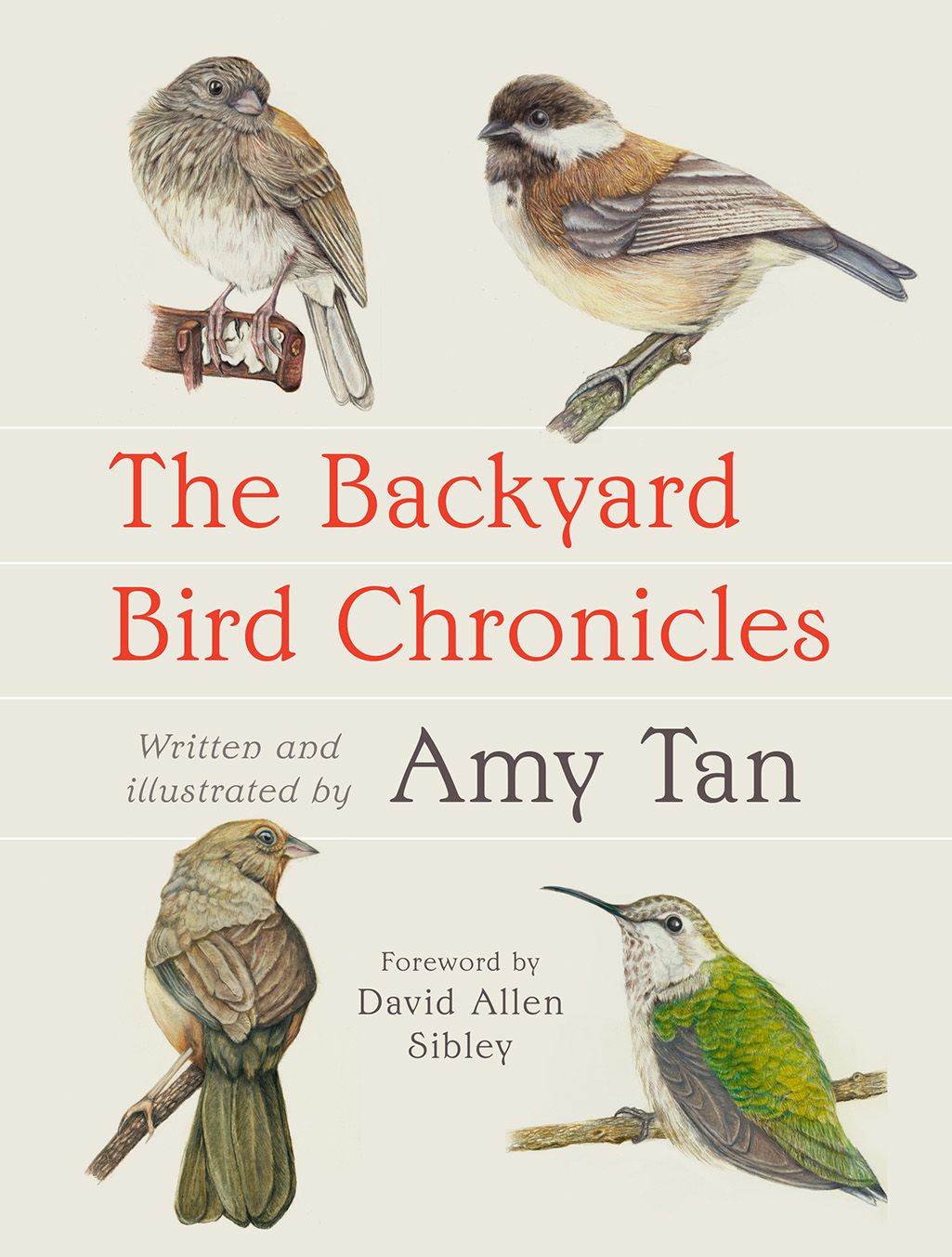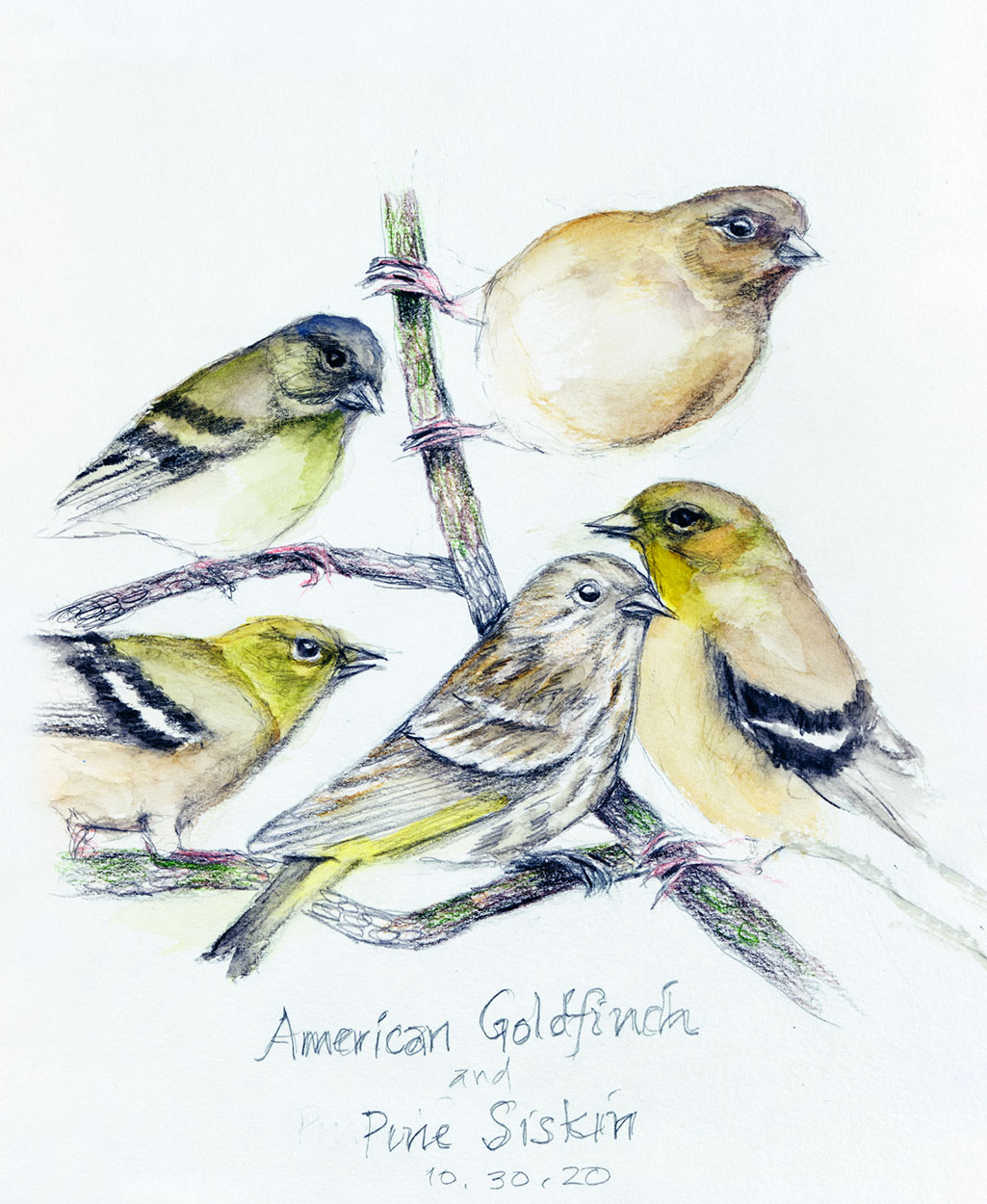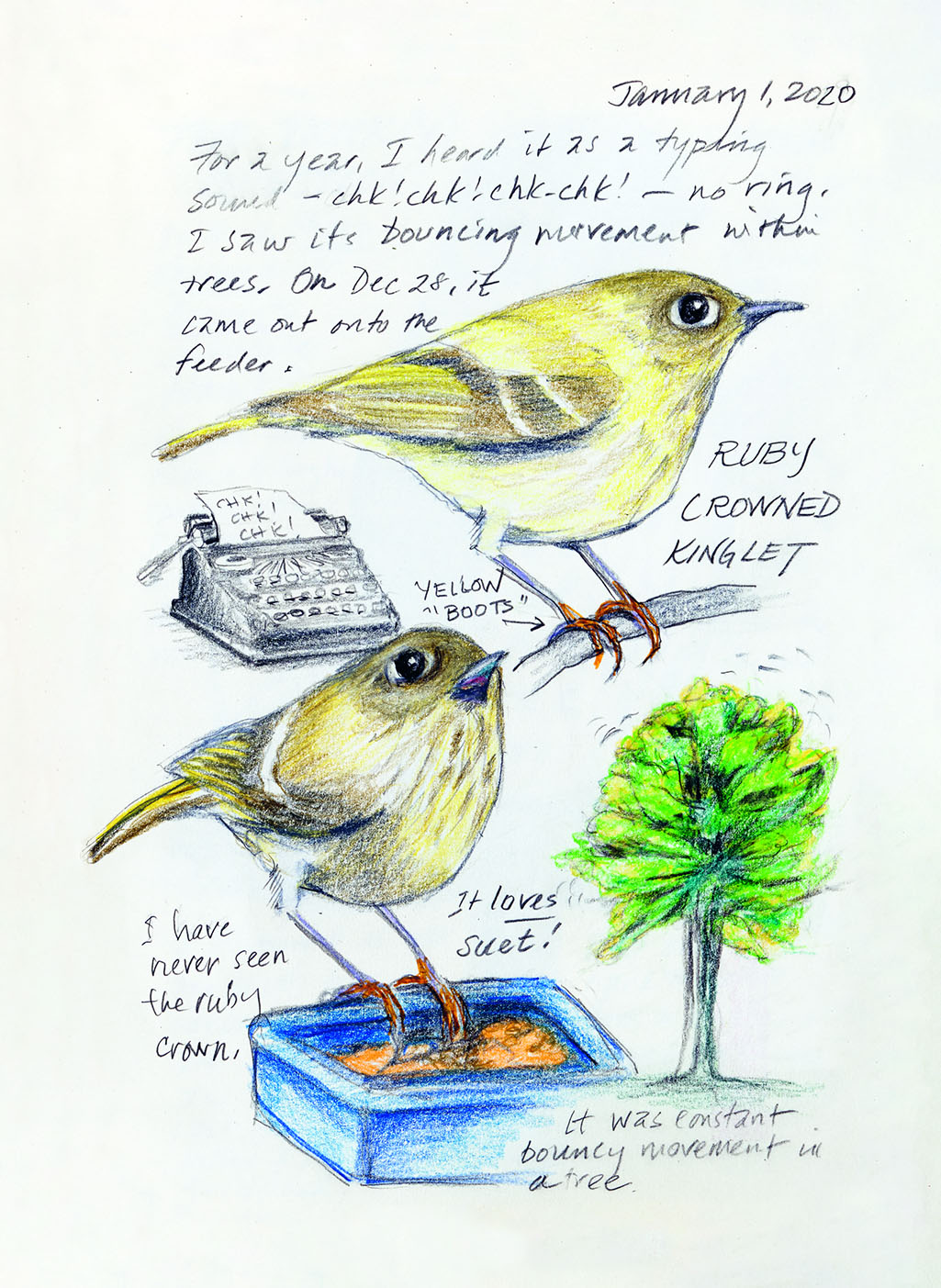You probably know Amy Tan from her novels The Joy Luck Club and The Bonesetter’s Daughter or from her memoir, story collections and children’s books. But the National Humanities Medal winner is also a passionate animal lover. And as with her writing, Tan never does things halfway.
When Tan decided she loved Yorkshire terriers, she soon became co-owner of a Yorkie that won at the Westminster Kennel Club Dog Show. She also has crusaded against puppy mill owners. “Animals are a big thing,” Tan says.
So in 2016, when Tan began to pay attention to birds, her curiosity soon grew into what she calls an obsession. The product of that time and passion is The Backyard Bird Chronicles, published this month from Knopf and available at REI Co-op.
When she began to watch birds, Tan could name only about three of the species that frequented her home in Sausalito. Today, her “yard list” is up to 63 species. But she’s not in it for the numbers. As her ability to identify them grows, so does her knowledge of their habitat, habits, foraging and the like. A wider appreciation of the world close to home opens to her eyes. It turns out that birders and novelists have something in common: They are both good noticers. At age 64, she also enrolled in her first-ever nature journaling and drawing class with the naturalist and author John Muir “Jack” Laws. She practices drawing birds every day, putting in what Laws calls “pencil miles.” It turns out that she’s quite good at it.
As a result, the pages of Chronicles are filled with Tan’s lovely sketches as well as her handwritten notes and typed descriptions. David Henkes, book buyer for REI Co-op, was drawn to the author’s ability to discover such wonder right at home and also how Tan makes us feel that we can discover that too. “That’s what really resonated with me: I’m a novice birder, so anytime I’m going outside, I’m always listening to see what birds might be around,” Henkes said.
Chronicles is a very different kind of book for Tan, even the author acknowledges. The novel, with all its structure and meticulous shaping, “is torment,” she writes in her preface. Chronicles, on the other hand, is “pure fun”—“spontaneous, a bit of a mess, come what may,” she writes.
We sat down with Tan—an REI Co-op member along with her husband since their college years, when they were avid backpackers—to talk about her unique path that resulted in this book and how becoming a birdwatcher has changed her life.

[REI Co-op]: Did you first start taking nature journaling classes because you wanted to learn to accurately document wildlife—or was it another way to pursue your growing interest in birds?
Amy Tan: I didn’t really set out to draw just to draw. My whole meaning for this originally was to get away from all the noise and the racist rhetoric of 2016. I had received, over the course of my life, various insults and things. I’d been told to “Go back to where you come from” (I always want to say, “Oakland?”)—but not to this degree, where I always felt I had to be suspicious. Before and after the 2016 election, it was very disturbing. I didn’t want to be consumed by the fact that I was surrounded by what seemed like a lot of hateful people. This, of course, worsened during COVID, and it gave me the sense that this is the reality that African Americans face every day. I’m just getting a little part of it. And I can see how it just throws you off balance, all the time.
If somebody ignores me in a store, or somebody doesn’t serve me—serves everybody on [an] airplane but me—and doesn’t acknowledge me, doesn’t look at me, I think, Why? And one of the things that crosses my mind is they’re racist and they don’t like Asian people. So that is to just give you the sense of what it was that I was dealing with—the ugliness of it. I decided to go into nature and see beauty.
The birds, the animals, they don’t care. I mean, they care that you’re there, in that sometimes they want to get away from you. So you need to learn to have a good relationship with nature, learning what that respect is, and appreciating it at deeper levels. Drawing that would enable me to notice more patterns. Details. Seasons of change. And to capture it.

I think there’s a tipping point in appreciating birds, where suddenly you are just as interested in the little brown birds as you are in the big, “interesting,” vibrant birds, and it becomes just as much a joy to watch house sparrows as it is to see an owl or an eagle. Did you have that arc?
Tan: Pretty quickly. Of course, people would like to sketch a big bird, like the red-tailed hawk. But there was a hummingbird that landed on my palm, and I could see everything about it. And that was the bird. That first time a hummingbird just looked up at me—it’s drinking and looking at me, and I’m looking down on its little head, and looking at the feather pattern, and how beautiful and intricate it was—and to think that it had evolved, that this bird had come to look like this, I was just so amazed, and I fell in love with birds.
And I think when birds move you emotionally, it’s a tipping point. This one moved me in another direction, of being incredibly sad. It was a sick bird that I saw—a pine siskin—and it I thought it was a baby bird. It was real fluffy. And then it landed on me, and I thought, Well, that’s wrong. And it wasn’t a baby. I realized it was December; it couldn’t be a baby. And I realized it was sick. I saw its half-closed eyes; it wasn’t really eating and wasn’t really swallowing. It had salmonellosis [a common, usually fatal disease in birds, often found when they gather in large numbers, including at feeders], which was going around; there was an outbreak.
I took all the feeders down. I threw away all the open bags of food and gave away everything else. And I thought, I’ll never do this again. It’s just so heartbreaking. But you know, when things break your heart, they open your heart; they break it open. And then I was interested in being involved more in saving birds or protecting birds—in conservation.
So I went back to it, but I was very careful about monitoring what kind of birds are on the feeder and what I could do to keep the feeders really clean.
You talked a little bit about the accuracy and the rules you set for yourself in Chronicles—that you weren’t just going to sprinkle in other birds. But you also suggested that it was fortunate when you started that you didn’t expect that this was ever going to be published because it allowed you to play a little more freely in the space. How do you balance that desire for things to be perfect and accurate with the enjoyment of just getting it down on paper?
Tan: At the time, because it was just for me, I didn’t have this feeling that I had to make each of the drawings in the journal very realistic. I was interested in learning how to draw birds, so I started doing more detailed drawings. But that’s very different from nature journaling.
So now, if I were to do it over again, I would have to remind myself about the nature of getting into this for fun—the lack of subconsciousness, which goes against spontaneity, goes against the freshness and naturalness of what I’m doing. And I’d have to remember that this is very much something for me and not for other people to say, ‘Oh, wow, she drew a leg really well.’
That, in the end, is what’s worth it. I think about, also—and as I get older, this becomes more important—this notion of: At the end of your life, what is more important? That she drew a perfect little foot? Or that she had a really great time, just spontaneously being in the moment and seeing that behavior and capturing it? And so that guides a lot of what I do these days.

You originally made this book just for you—and now it’s out there for everyone. What are you hoping people will walk away with?
Tan: The same thing that I got out of it: to have fun but also fall in love with birds—and then want to save them. Birds made me want to get into conservation. And I think it’s a natural consequence of loving birds. So, if more people got into conservation, I’d be so grateful that that’s the message they got from the book. But mostly the message is just: Have fun. Watch them. Love them. Appreciate them. Make your life more joyful by watching birds.
I don’t know a lot about birds. I’m not an ornithologist. I’m not an expert birder. So I think I’m coming in at a level that’s the best, which is just having an open-minded curiosity about them. To those who’ve never done it before, I’m saying: You’re so lucky, because you have so much to discover. It’s all going to be wonderful.
